Cane Corso
The Cane Corso a large-sized Italian breed is a wonderful companion dog, also known for its perfect guarding skills. Being a close cousin of the Neapolitan Mastiff, it is sturdily built with a powerful, athletic body, alongside a flat skull, rectangular muzzle, medium-sized, dark, almond-shaped eyes, well-shaped triangular ears, as well as a fairly long, thick tail which mostly stands erect. Docile and affectionate in nature, they are known to emerge as a fierce protector when it comes to guarding their master’s home and property.
Cane Corso Pictures
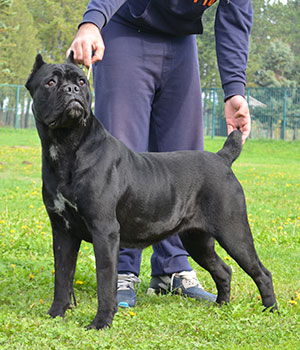
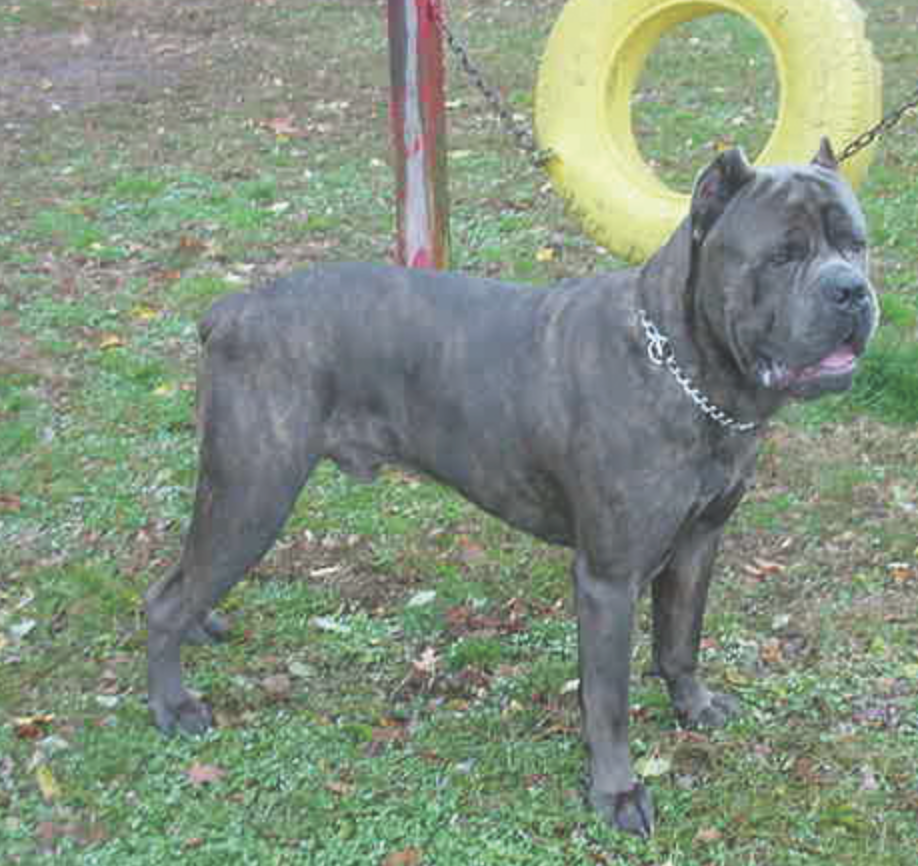
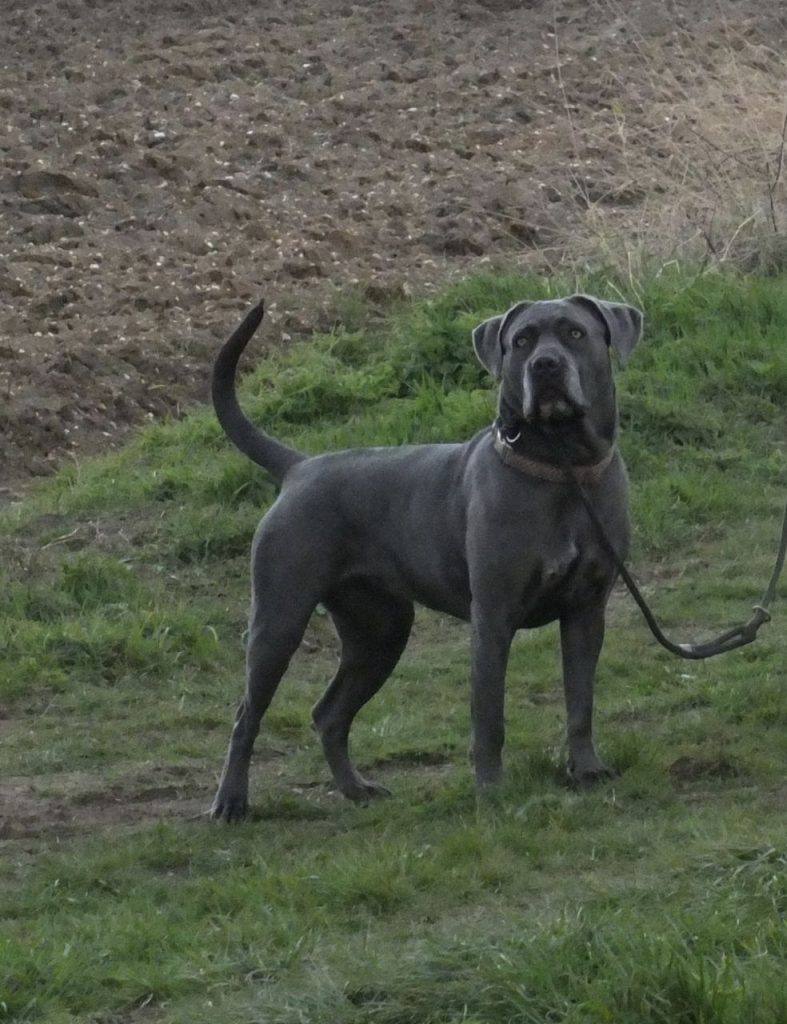
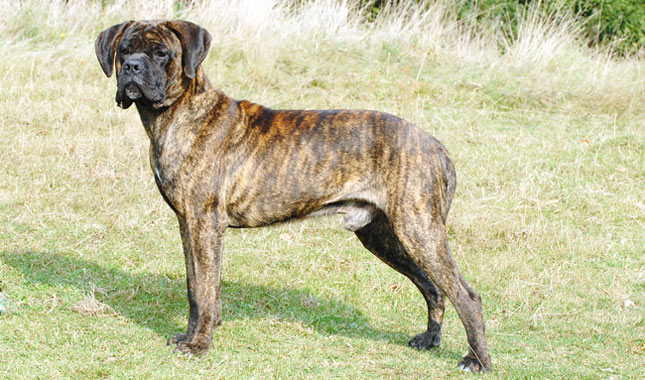
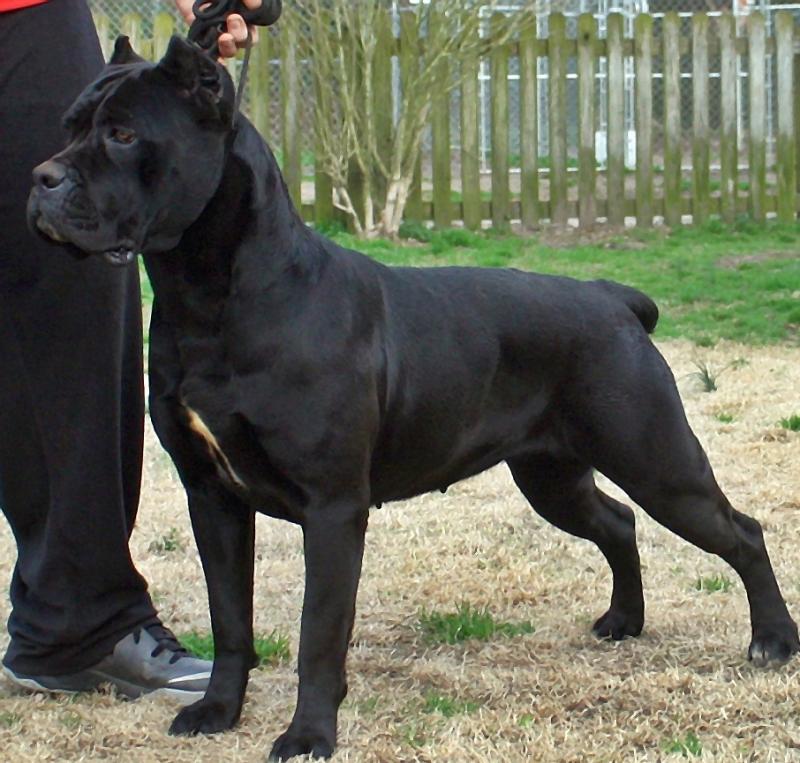
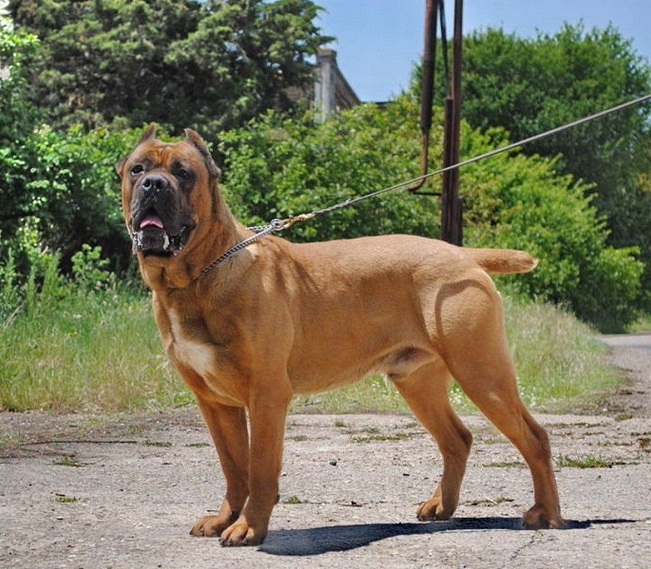
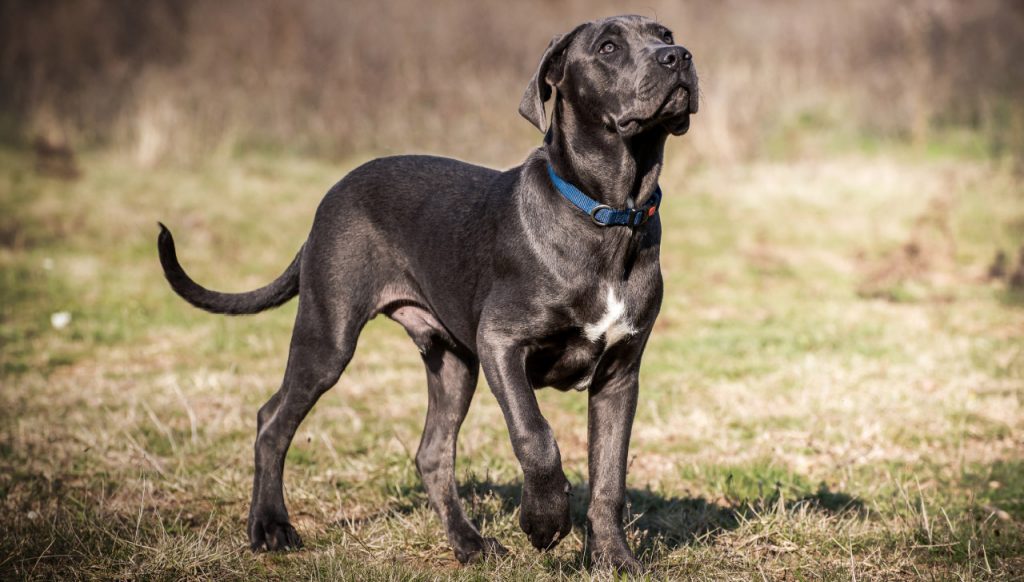
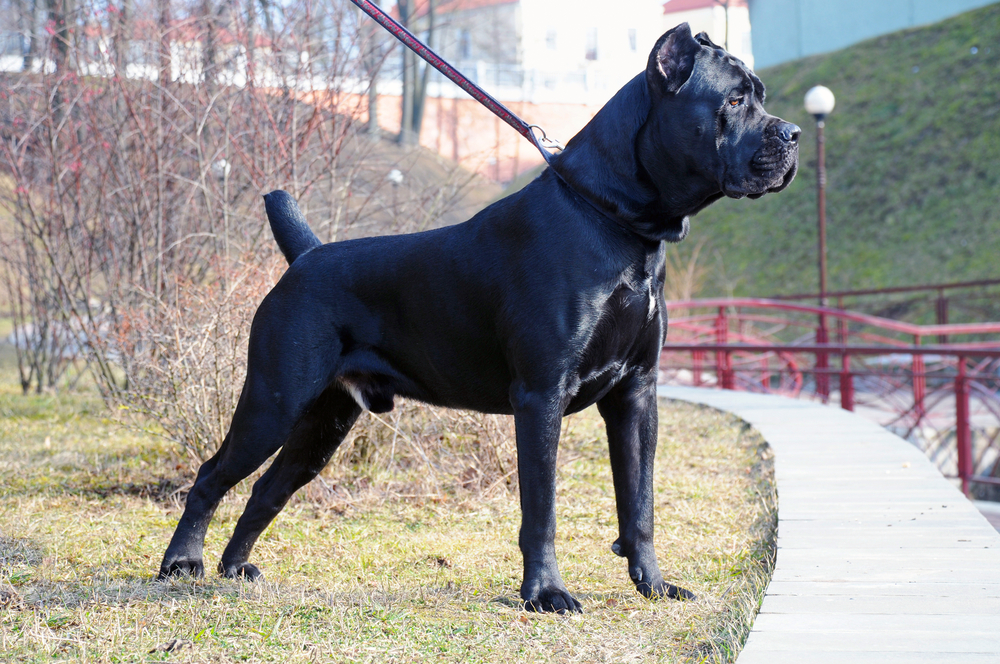
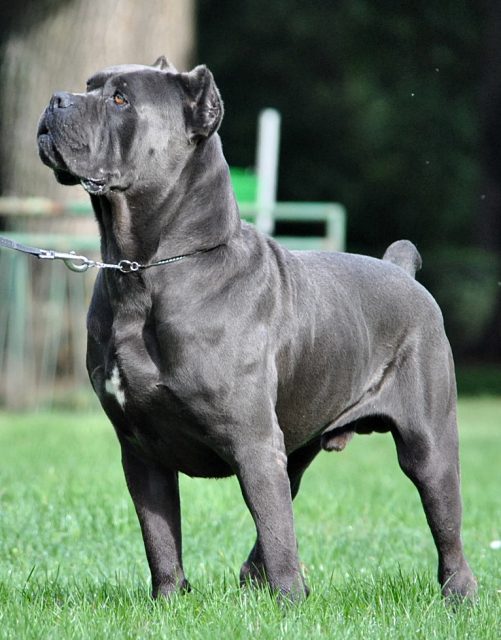

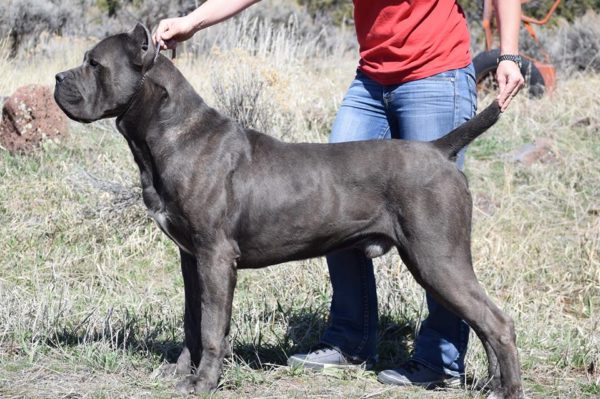

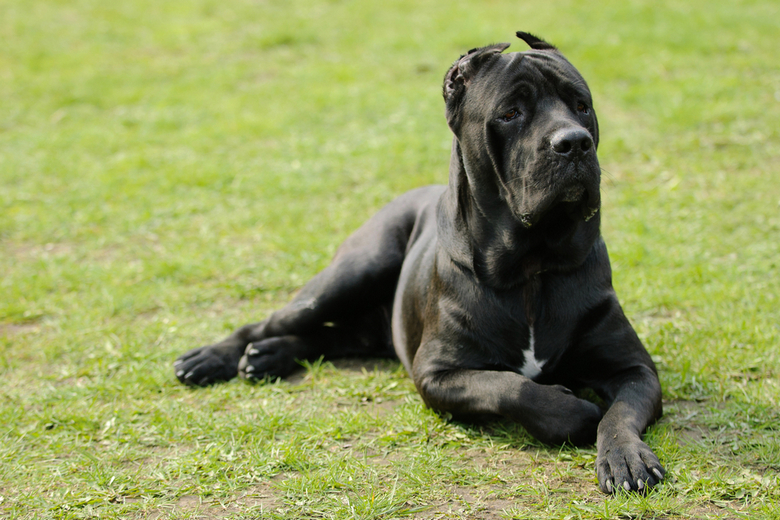
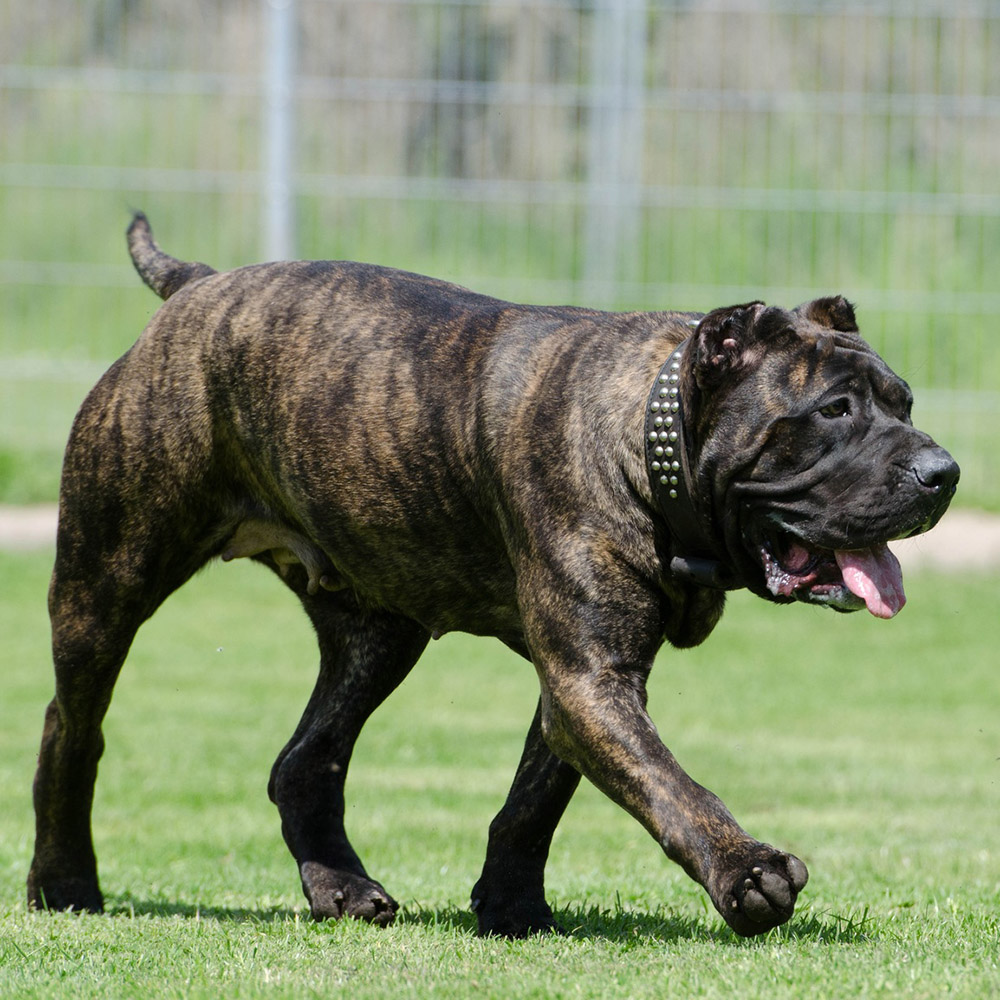

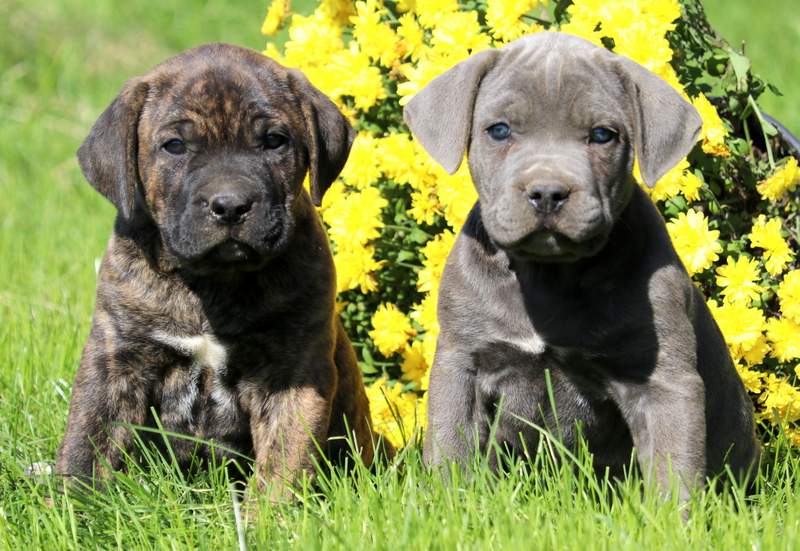

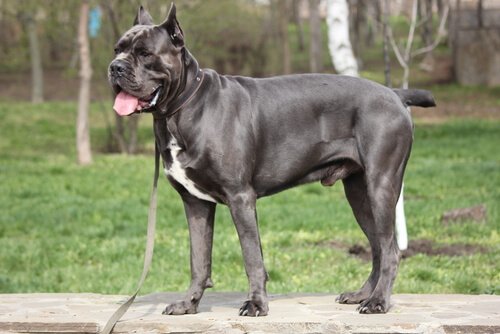


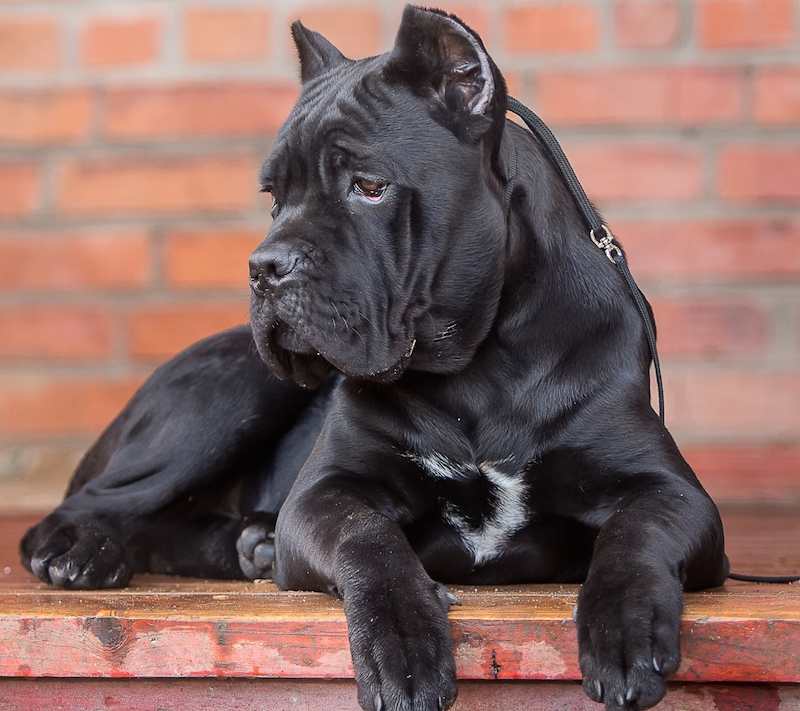
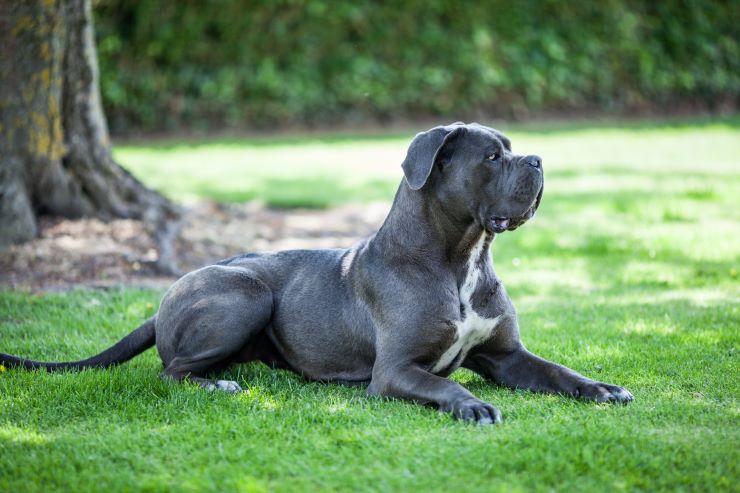
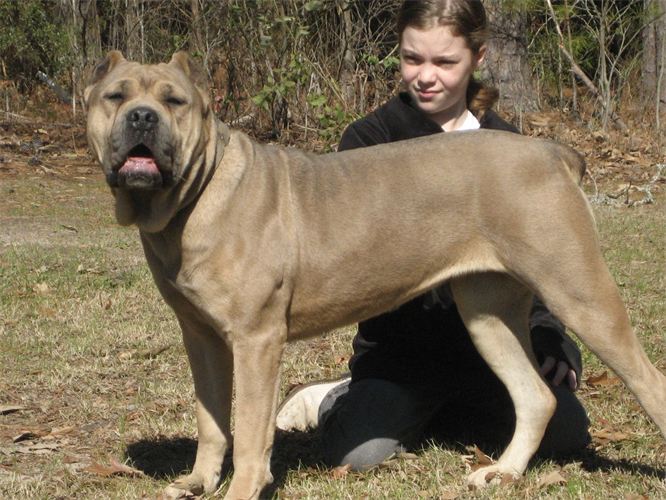
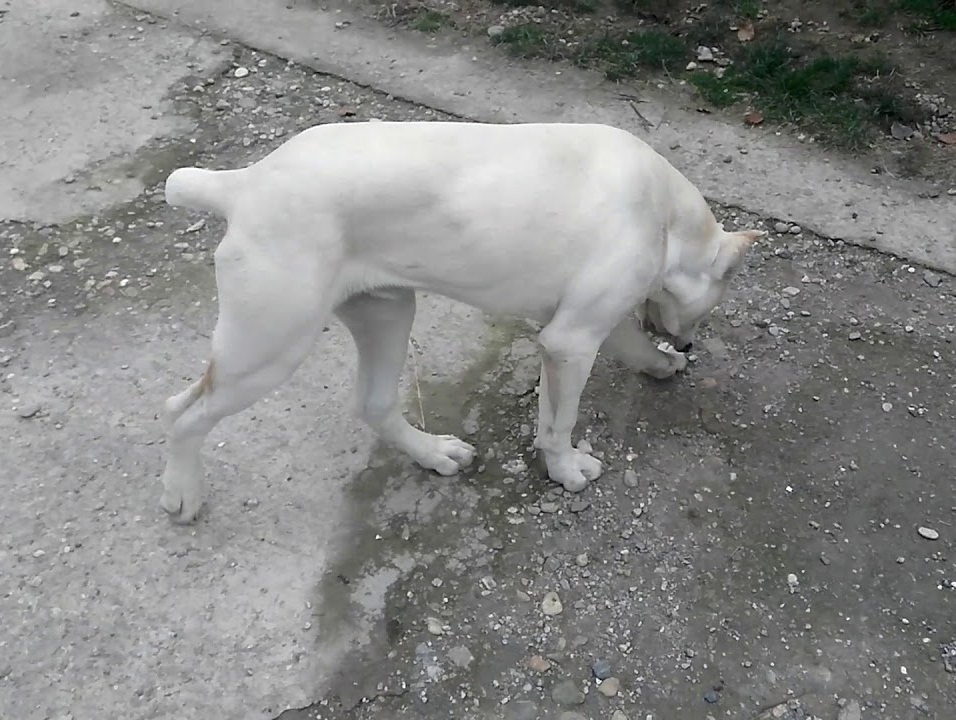
Quick Information
| Common names | Cane di Macellaio, Sicilian Branchiero, Italian Mastiff |
| Pronunciation | KAH-neh COR-soh |
| Coat | Short but not too smooth, coarse and thick |
| Color | Black, grey, fawn, black brindle, red, chestnut brindle, grey brindle |
| Breed type | Purebred |
| Group | Molossers, Guard dogs, Catch dogs |
| Lifespan | 9 to 12 years |
| Size | Big |
| Height | Male: 25 to 27.5 inches; Female: 23.5 to 26 inches |
| Weight | Male: 100 to 110 lb; Female: 90 to 100 lb |
| Litter size | 4-6 puppies |
| Behavioral traits | Loyal, protective, friendly, affectionate and intelligent |
| Good with children | Yes |
| Barking tendency | Only if threatened |
| Climate compatibility | Adapts well to cool climate but cannot withstand heat |
| Shedding | Moderately |
| Hypoallergenic | No |
| Competitive Registration Qualification/ Information | AKC, FCI,UKC, CKC, ACR, ACA, NAPR, DRA, NKC |
| Country | Italy |
Video of 4 Week Old Cane Corso Puppies
History
The Cane Corso is a part of the subcategory of working dogs known as molossers, brought to Italy when the Roman rule was at its peak. They were then bred with local breeds, the outcome being dogs that are said to be ancestors of the present time Cane Corso and its nearest kin, the Neapolitan Mastiff.
The original Cane Corso was bigger in size than the sleek, elegant, graceful dogs of the present times. In the traditional period, the canines were mostly used in conquests, where they fought fiercely against their opponents.
After the Western empire dissolved in the 5th century, the legions along with their dogs were jobless. It was at this time that the roles of the Cane Corso changed and it was employed to hunt boars, and also used on farms for protecting livestock from the clutches of wolves as well as other wild animals. They were even used to guard henhouses and farmsteads, as well as protect homes.
Their role of a guarding dog prevails even at the present times and the Cane Corso is known to carry out its job with conviction. Introduction of mechanized farming techniques alongside political and economic turmoil in their place of origin caused their numbers to dwindle at a rapid pace, putting them at the brink of extinction in the middle of the 20th century.
The generous efforts of a few dog enthusiasts of Italy led to their revival, saving them from extinction. The Italian Kennel Club granted acceptance to this breed (as its 14th) by 1994, while the FCI accepted it provincially and fully in 1997 and 2007 respectively. In 1983, the Society of Cane Corso Lovers (Society Amorati Cane Corso) formed, and they were displayed in several dogs shows all over Europe. The first of this breed reached the United States in the year 1988 and gained AKC’s recognition in 2010, ranking 37th in terms of popularity.
Temperament and Personality
The Cane Corso with its affectionate, docile and lovable nature is a perfect family dog, sharing a great equation with kids especially when brought up with them. However, mischievous children running all over the place, making high pitched noise could trigger his prey drive and cause him to get after them. These loyal dogs always remain eager to serve their masters.
These canines have a high level of intelligence and if not in the hands of the right master, their stubbornness and dominating nature could take a toll, making it a threat to the people round its locality.
The even-tempered Cane Corso is great as a family protection dog and would not step back to defend or protect their master’s household or assets from any impending danger if the need arises.
Hence, they are efficient watch and guard dogs, also maintaining a reserved demeanor towards strangers. They would get along with other dogs only if socialized well; though avoid keeping them with larger ones of the same sex. It is an easily adaptable dog and can get along well in apartments provided its energy is channelized in a positive way.
Care
Exercise
Keeping their high energy levels in mind, the Cane Corso requires a sufficient amount of exercise. A brisk walk or little running in the morning and evening would be a great option to keep them healthy. Owing to their sturdy built and fit body, they would form great walking, hiking, and cycling companions. Never take them out to exercise when the temperatures are soaring since they cannot withstand excessive warmth and are at a higher risk of heat stroke, especially if they have a black body color.
Grooming
The Cane Corso with its short outer coat and light undercoat sheds moderately barring the shedding season (spring) when there is heavy hair fall.
Brush its coat one or two times in a week using a brush with medium bristles, while a hound glove may help in removing the dead hair and preventing it from spreading across the furniture.
Bathe him once in three months with a mild vet-approved shampoo. Other hygiene needs involve cleaning its ears, trimming its nails, and brushing its teeth on a routine basis to ensure better hygiene. Cane Corsos having a heavy jowl often have a tendency to drool, while those with tight lips don’t. Hence it is essential to wipe their faces well with a damp moist cloth, especially after a meal.
Health Problems
Some of the common health issues faced by them include hip dysplasia, demodex mange (an inflammatory disease), idiopathic epilepsy, eyelid abnormalities, watery eyes, skin related problems like acne, and bloating.
Training
They are stubborn with a dominating tendency, hence a firm trainer is needed to manage them so that they do not get aggressive and display any untoward behavior in public.
Socialization training: To keep its aggression under control, it is extremely essential to socialize the Cane Corso puppies as early as possible. Acquaint him with individuals varying from one another in physical features and voice textures. He should also be exposed to a whole lot of experiences to help him learn to differentiate the good from the bad. Take your pet to puppy parties and also make him observe dogs by standing outside a dog park. In this way, he would get observant about the things around him and eventually be able to shed off his negative behaviors.
Note: Even after it has been socialized to deal with strangers, it is always advisable to keep a vigil when your dog is interacting with visitors.
Obedience: Teaching him commands like “Sit”, “Stop” and “No” at an early juncture in life may help your pet overcome his aggression and stubbornness.
Controlling his instinct to bite: Never yell or scruff (as recommended by many) at the dog, instead once he is trained on commands, just say a gentle “No” in a firm voice if his teeth come in contact with your skin. Avoid looking at your dog and even stop playing or pampering him at this point in time. This may help him understand his unacceptable behavior and your dog could even mend his ways.
Feeding
Feed your Cane Corso a good quality dry dog food teamed with a healthy homemade diet, but in measured amounts. Some of the best dog foods recommended for the Cane Corso includes Fromm Family Gold Dry Dog Food, Wellness CORE Grain Free Original Formula Natural Dry Dog Food and Blue Buffalo Wilderness Nature’s Evolutionary Salmon Diet.
As far as the feeding schedule of the Cane Corso is concerned, puppies are recommended to be fed four times in a day, till 6-12 weeks, while from 6 months of age it can be given two feeds.
Is the Cane Corso Aggressive
Though the Cane Corso does not belong to a group of fighting dogs, it is dominating as well as stubborn and can show aggression when not trained or dealt in a proper way. It has a bite force of 700 psi which can prove fatal on the victim.
Cane Corso Attack
A Cane Corso had bitten 46 year old Craig Sytsma on his arms, back, thighs, buttock and chest, when the latter was out jogging. The victim succumbed to his wounds.
According to the attack statistics, as compiled by a certain source, the Cane Corso has 21 attacks of which 4 of them are children and 11 adults. There have been reports of 2 casualties and 12 maimings.
Interesting Facts
- Cane in Italian means dog and Corso translates to course or coursing dog.





